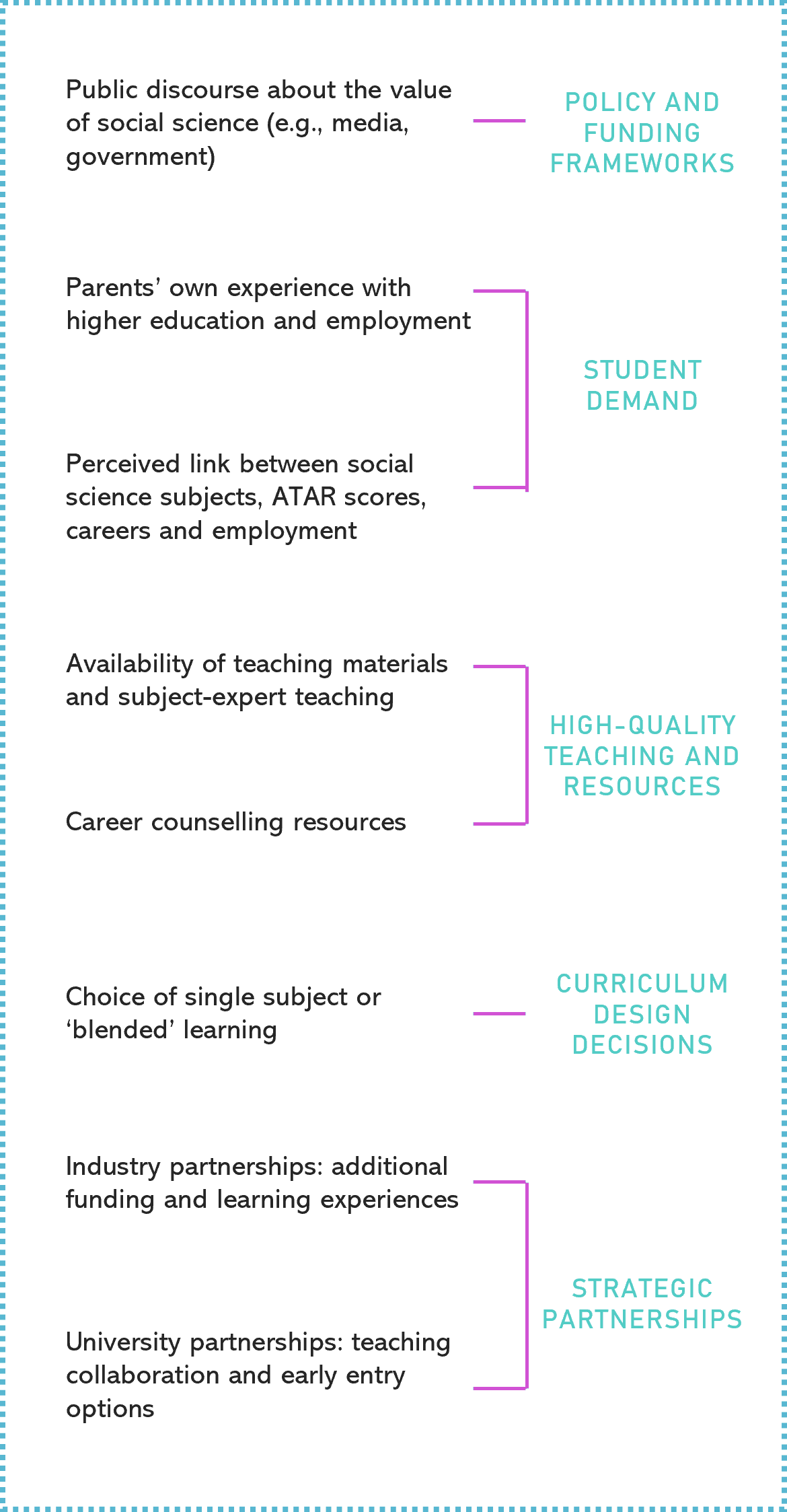Losing ground
in senior secondary
In senior secondary, the Australian Curriculum shrinks to a few subjects, and schools have significant discretion to decide which courses to offer to students each year.
Unfortunately, consulted stakeholders agree that there is a decline in the proportion of social science subjects available to students in senior secondary, as a result of factors such as those outlined in the diagram below. Data on student enrolments are not publicly available for individual subjects, so the exact extent of the problem cannot be measured at present.
The influence of parents in subject choice appears to be particularly strong, with stakeholders observing that, while students may be interested in continuing their social science education, some parents direct their children to choose class subjects that have more obvious employment connections.
Stakeholders described the current environment around senior secondary electives as a marketplace, with teachers having to convince students, parents and schools of the merits of enrolling in social science subjects or maintaining them in the timetable.
This situation makes it difficult for students with talent or a disposition for the social sciences to pursue their interests in senior secondary and, for the remaining students, to gain a basic understanding of social science knowledge and skills. With schools as the first step in the educational pipeline, reclaiming ground in senior secondary is key.
“What we’re hearing from social science teachers right now, is that they have students who want to take their [social science] subject into senior year levels, and parents who are saying ‘no’.”
Director, Teaching Association.
“Every student, every Australian decides whether or not they’re interested in the social sciences at school”
School sector stakeholder.
Availability and quality of elective subjects in senior secondary

With big industry supporting STEM in schools, how will we level the field for social science and other areas?
Stakeholders report that STEM learning areas are often supported with high-quality teaching and career counselling resources as a result of ongoing investment by mining and other big industry entities interested in encouraging students to pursue STEM in higher education. The lack of similar resources for other areas inevitably makes them look less attractive and relevant in the future employment market. If the social sciences, arts and humanities step up, big industry will have inadvertently played a part in increasing the standard of teaching and career resources in schools, for the benefit of all students.
Re-examining ‘blended’ learning
The social sciences have increasingly been offered in a blended or ‘integrated’ format, often in conjunction with the humanities. While convenient, this does not always result in improved learning outcomes. Consulted stakeholders insisted that effective delivery of mixed-area subjects works best when:
- Delivered by a teaching team with appropriate expertise in each individual subject.
- Each subject is clearly distinguishable.
Emerging university-school partnership models
- Early entry into undergraduate social science programs (e.g., from Year 11).
- Universities collaborating with teachers’ associations to support professional learning for school teachers, in their discipline.
- Alternative admission pathways (non-ATAR) into social science disciplines (e.g., essay, interview).
